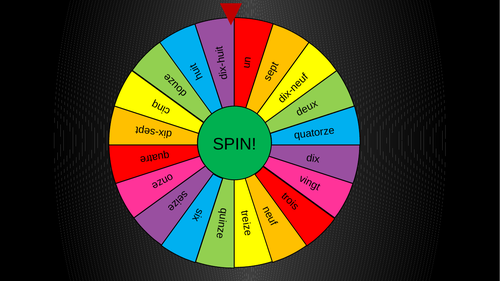Making decisions isn’t always easy. Whether in classrooms, workplaces, or family gatherings, disagreements can quickly stall progress. That’s why interactive tools like the wheel of names are gaining attention. They offer a fair, unbiased, and fun way to make selections that everyone can accept.
Simple Decisions with Yes or No
Sometimes, people just need a quick choice without overthinking. This is where Yes or No proves helpful as a straightforward website designed to provide instant answers. It takes the stress out of everyday dilemmas by offering quick, impartial results. Combined with the wheel format, it turns even simple decisions into engaging experiences that participants can enjoy.
Why People Prefer a Wheel of Names
The wheel of names has an appeal that goes beyond traditional methods like coin flips or drawing straws. It’s transparent, customizable, and visually exciting. The spinning motion builds suspense, while the visible options ensure fairness.
- Engagement: Perfect for classrooms or team meetings where energy and attention matter.
- Impartiality: Every option has an equal chance of being selected.
- Flexibility: Works for names, chores, activities, or even game challenges.
Teachers, for instance, can use the Spin the wheel feature to randomly select students, ensuring equal participation without bias. Families can use it during game nights to decide turns in a fun way.
Everyday Uses of the Wheel
The versatility of a wheel means it can be adapted to countless situations:
In Education
Teachers can maintain engagement by letting the wheel decide which student answers next. This reduces pressure while still encouraging participation.
In Workplaces
Managers can use it to assign tasks or start icebreakers during meetings. Instead of tension, employees get to enjoy a lighter, more interactive process.
With Family and Friends
From selecting dinner options to choosing weekend activities, a spin of the wheel transforms routine decisions into shared entertainment.
In Online Communities
Streamers and content creators often use wheels to pick winners in giveaways or assign fun challenges. The transparency builds trust among participants.
The Digital Edge
Unlike pen-and-paper methods, digital tools make it easy to input multiple names or choices, customize designs, and adjust spin duration. Options like the Wheel of names are instantly accessible online, making them convenient for both personal and professional use.
Watching the wheel spin also makes the process feel more exciting than static alternatives. The suspense creates a sense of fairness and involvement that participants appreciate.
The Psychology Behind Random Spins
Random decision-making helps reduce stress and arguments. When the outcome is left to chance, people are more likely to accept the result. The spinning process also provides closure, as everyone sees the decision unfold in real time.
This psychological factor is especially powerful in group settings. It helps prevent accusations of favoritism in classrooms, eases workplace tensions, and avoids disputes during family activities.
More Than Just Fun
While the wheel of names adds excitement, it also offers practical advantages:
- Saves time by cutting down on lengthy debates.
- Removes bias by treating all entries equally.
- Increases engagement in learning, work, and play.
- Adapts easily to different contexts, from schools to events.
These benefits prove that the wheel is not just a playful gimmick but also a useful tool for everyday life.
How to Get the Most Out of It
For the best experience, here are a few tips:
- Keep inputs fair – Ensure no duplicates or missing entries.
- Use appropriately – Great for casual and routine decisions, not major life choices.
- Get everyone involved – Let participants see or add their own names for more excitement.
- Customize design – Colors and spin duration can make the process more engaging.
Conclusion
The wheel of names highlights how technology can simplify decisions while making them fun. Whether it’s in schools, workplaces, families, or online spaces, the spin of a wheel offers fairness, neutrality, and excitement.
With resources like Yes or No, people can make fast choices or add structure to group decisions with just one click. It turns hesitation into action and transforms everyday choices into moments of anticipation. Sometimes, all it takes is a single spin to bring clarity and enjoyment to the decision-making process.

